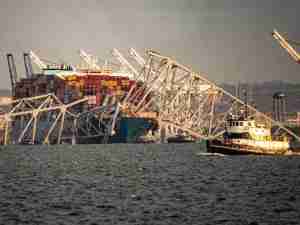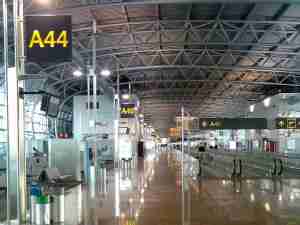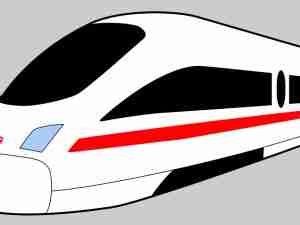Lower oil prices will blunt drive for fuel efficiency
By: Reuters | Jan 20 2015 at 01:02 PM | Air Cargo | Intermodal | Liner Shipping
For a decade, high and rising prices have created a strong incentive to use oil-derived fuels more sparingly.
By the end of 2012, efficiency improvements, substitution, and changes in behaviour had cut oil consumption in the advanced economies by 8 million barrels per day (bpd) compared with the pre-2005 trend, according to James Hamilton at the University of California ("The changing face of world oil markets" July 2014).
Today, consumption of petroleum products in the United States is 1.8 million b/d (9 percent) lower than it was in 2005, even though the population has increased by 23 million and real economic output is up almost 14 percent since then, according to U.S. government data.
Fuel consumption has fallen in every category of fuel from gasoline used in passenger vehicles and diesel used in trucks and trains to jet fuel used by aircraft and the heavy fuel oil used in ships and heating systems.
Efficiency and substitution have been just as important as the shale revolution in shifting the oil market from shortage to surplus and pushing prices lower.
But now some of those efficiency gains are under threat as the plunge in oil prices blunts the incentives to use oil wisely.
Lower prices will not reverse all the reduction in consumption that has occurred in the advanced economies since 2005. Nonetheless, they could slow the rate of future efficiency improvements and encourage more fuel use if prices stay low enough for long enough.
Focus on Fuel Bills
As a result of the quadrupling of oil prices between 2002 and 2012, fuel became the largest operating cost for airlines, railroads, shipping companies and trucking firms as well as private motorists.
Fuel saving became deeply ingrained in every aspect of the transport system to an extent that few outsiders realise.
Consumers in the United States and elsewhere purchased smaller and more fuel-efficient vehicles and reduced the number of miles travelled to reduce spending on fuel.
The average weight of new passenger vehicles sold in the United States has been basically flat since 2004 after almost two decades in which vehicles had become almost 30 percent heavier.
Fuel economy has increased by 25 percent from 19 to 24 miles per gallon since 2004, according to the U.S. Environmental Protection Agency.
And the number of miles driven peaked in 2007 and was still almost 3 percent lower in 2012, the longest and most sustained drop since World War Two, according to the Federal Highway Administration.
But it is not just private motorists that have been forced to economise on fuel. Refuse collectors and transit fleet operators have switched from diesel to natural gas to cut running costs.
Trucking firms cut their fuel bills by improving route planning to reduce empty backhauls and partial truckloads as well as cutting speeds and ordering drivers to switch off engines and plug into fixed power supplies at truck stops.
Slowing Down
Some of the most dramatic fuel savings have come from the airline industry. Fuel consumption per passenger-mile has fallen at an average annual rate of 2.3 percent since 1991.
In the 1990s, most of the improvements came from newer and more fuel efficient planes. In the 2000s, however, most of the increase in efficiency has come from operating practices.
Airlines have rationalised their route networks to reduce the number of empty seats: seat occupancy rose from 76 percent in 2004 to 83 percent in 2013.
Aircraft fly slower to reduce fuel consumption: average ground speed of seven major U.S. airlines decreased by 1.1 percent between 2004 and 2011.
And the total loaded weight of aircraft has been cut by 10-15 percent by reducing the amount of excess fuel, water and other items carried on board.
The same focus on fuel efficiency has been evident in maritime shipping as container shipping lines and especially oil tanker operators have resorted to "slow steaming" to cut their fuel bills.
Modern container vessels are designed to travel at around 25 nautical miles per hour (knots) while modern oil tankers are intended to travel at around 15 knots.
But the faster the vessel moves through the water, the greater the friction on the hull and the wave resistance, meaning that more power is needed and more fuel consumed.
By cutting the average sailing speed of a modern Very Large Crude Carrier (VLCC) just 3 percent the amount of fuel consumed can be reduced by more than 9 percent.
For a large container ship, cutting speed from 25 to 21 knots can cut power requirements and fuel bills by as much as 50 percent.
More than 45 percent of container operators and over 75 percent of oil tanker and dry bulk fleet operators reported using slow steaming in a 2011 survey conducted MAN Diesel, which makes the giant engines used in three quarters of the world's merchant ships.
By travelling more slowly, more container ships and oil tankers were needed to carry the same volume of cargo and customers had to wait longer for deliveries. Capital costs for the ships were higher while operating costs were lower.
But both shipping companies and customers favoured the trade-off to cut fuel bills, according to MAN Diesel ("Slow steaming practices in the global shipping industry" 2012).
Cheaper Fuel
If crude oil prices settle around $75 per barrel over the next three years, in line with estimates for the breakeven prices needed by North American shale producers, fuel costs for trucking firms, airlines and shipping operators would be around 30 percent lower than over the 2011-2013 period.
It seems reasonable to assume cheaper fuel would blunt if not reverse the push for greater efficiency in the transport industry. After all, it has happened before when oil prices fell.
The average weight of new vehicles sold in the United States fell from 4,000 pounds to just 3,200 between 1975 and 1987, but then crept up again to 4,100 by 2004 as years of low oil prices encouraged customers to buy bigger cars, light trucks and sport-utility vehicles.
Fuel economy, which had improved from 13 miles per gallon in 1975 to almost 22 miles per gallon in 1988, fell back to just 19 mpg in 2004.
There are already signs U.S. consumers have started to buy larger, heavier and less fuel-efficient vehicles again as gasoline prices have tumbled since June 2014.
For trucking operators, airlines and shipping firms the lessons in fuel efficiency learned over the last decade will not be so easily forgotten.
But there too, the trade-off between capital and operating costs is shifting. If fuel prices remain low enough for long enough, the pressure for fuel savings will wane.
Trucks, aircraft and ships will start to travel faster again, with more partial loads, and aggregate fuel consumption will increase. It is after all what happened during the 1990s.
Climate Change
There is, however, one crucial respect in which the current slump in fuel prices is different from the 1980s and 1990s.
In the 1980s, the pressure for fuel efficiency and substitution was driven almost exclusively by the need to dependence on expensive oil imports. In the 2000s, fuel efficiency is being spurred by concerns about climate change as well.
Pressure to reduce fuel use to combat global warming will not evaporate even if oil prices trade in a lower range over the next few years.
Some of the improvements in fuel efficiency have been hard-coded into legislation and regulations (eg vehicle fuel economy standards in the United States) and will not be readily reversed.
In that sense, much of the oil consumption which has been lost since 2005 is gone forever. But if prices remain lower for long enough, slower efficiency improvements and increased consumption are one way lower prices will rebalance the oil market between 2015 and 2017. (Reuters)










